In part three of this home exercise series, we look at the how to perform the perfect push up. In addition I’ll show you how to make adjustments to further stimulate certain muscles.
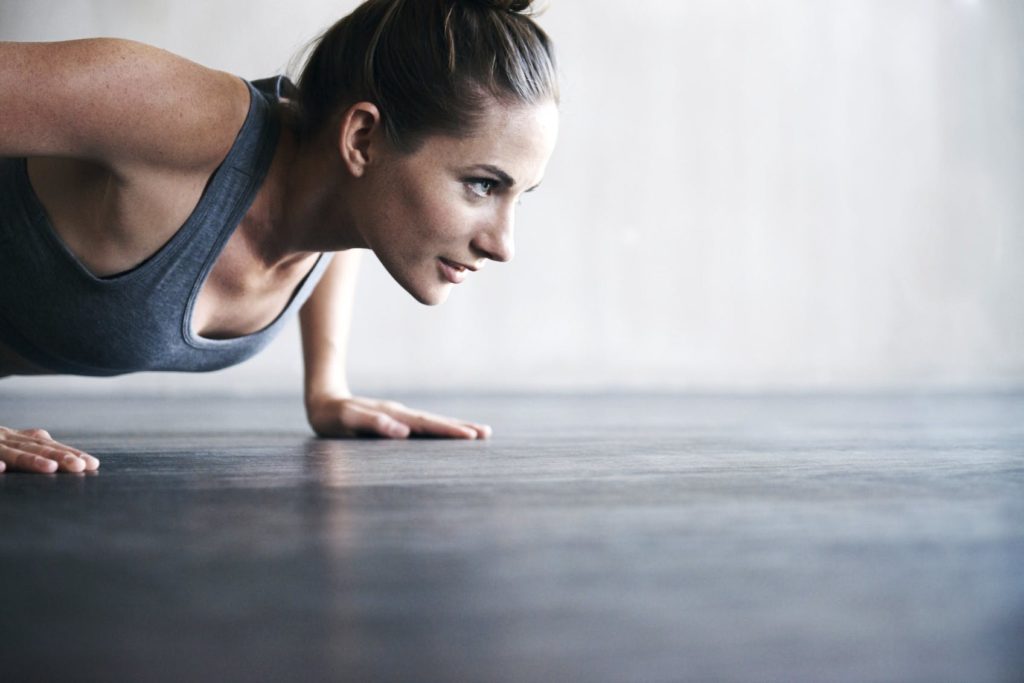
The push up is an incredibly versatile exercise. For many people it will provide a significant challenge to the muscles of the chest, shoulders and arms.
Before we discuss how you can tweek it to bias particular muscles, let’s look at how to perform it perfectly.
As with all exercises, there’s a difference between doing it and doing it right. Perfect execution improves results and reduces your risk of injury.
Not only that, when this is all over and you return to the gym, you’ll be one of the few people who can perform this exercise faultlessly.
How to set up the perfect push up
The first thing you need to decide is whether to perform a full push up, or an adapted version from your knees.
If you can perform 6 full push ups, choose this option. Otherwise the adapted version pictured below is a great place to start.
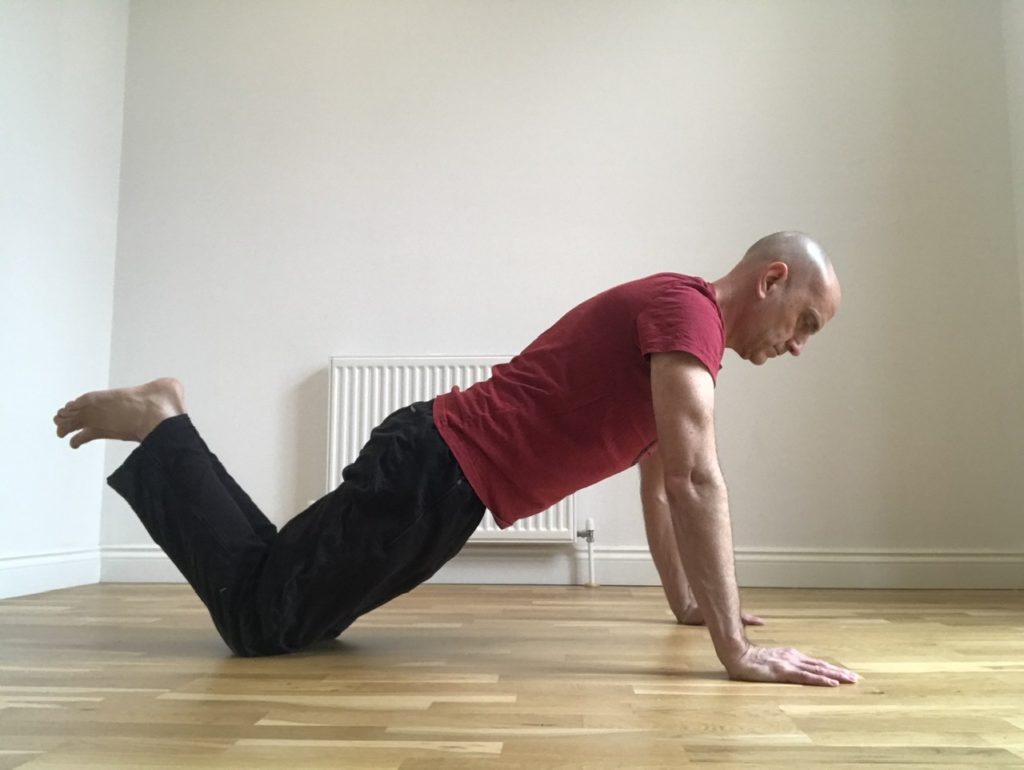
Do you have enough wrist extension for push ups?
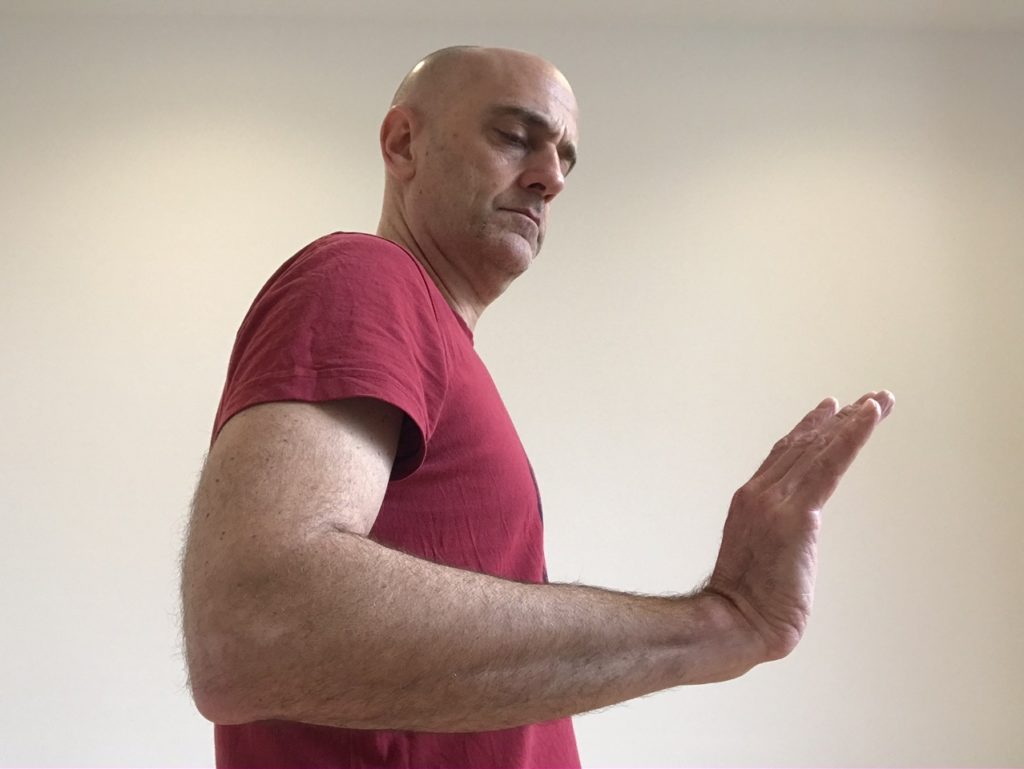
Next let’s check if you have adequate wrist extension to perform the exercise with your palms on the floor. Some people experience wrist issues with the push up and this is why.
With your arms out in front of you, extend your wrists as far as you can. You’ll need around 80 degrees to comfortably perform a push up.
If your wrist extension is limited, use push up stands or something similar and work on your wrist extensors in the mean time.
How deep should you go during push ups?
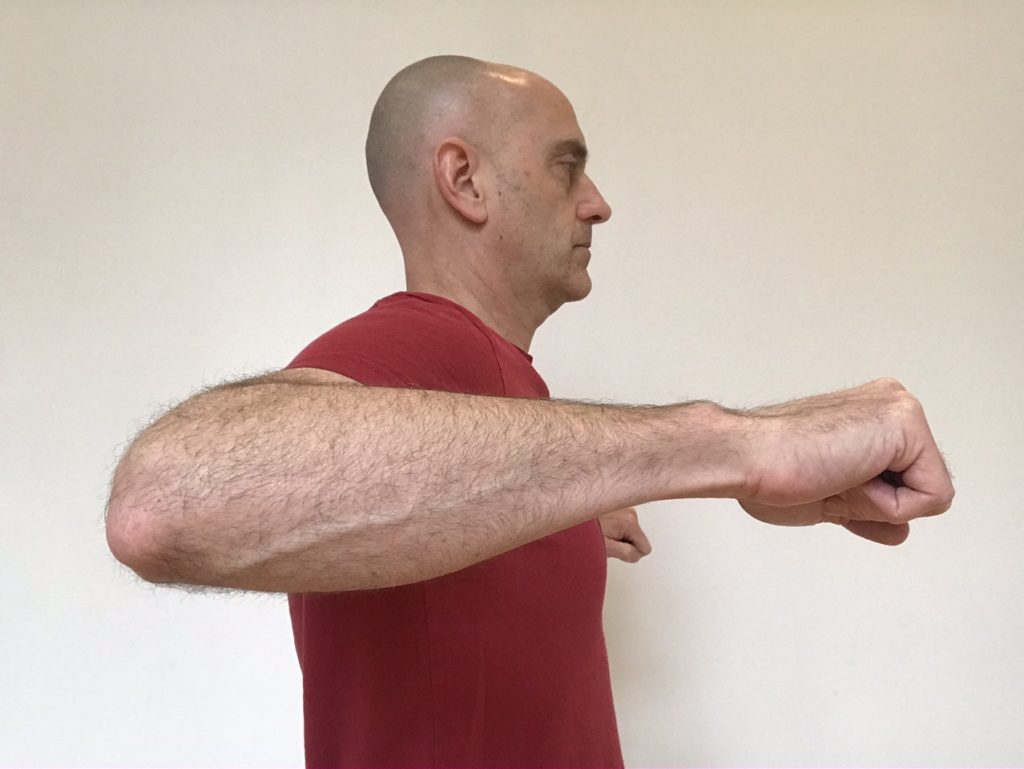
The next decision is how deep you should go. This will be primarily governed by how much motion (horizontal abduction) you have available at your shoulders.
To test this stand up and have both your hands and elbows at chest height. Move your elbows as far back as you can. The distance between your hands and your chest represents your maximum depth.
How wide should your hands be for push ups?
Now you need to decide the ideal width. This should be relatively intuitive but bear in mind the closer your hands are to your body, the more emphasis you’ll place on your elbow extensors (triceps).
Experiment with what feels good. Having your hands slightly inside of your elbows in the bottom position of the exercise, will provide a nice balance between chest and arm muscles.
Once you’ve found the ideal width, make sure your hands are in line with your chest.
You’re now ready to begin.
How to perform the perfect push up
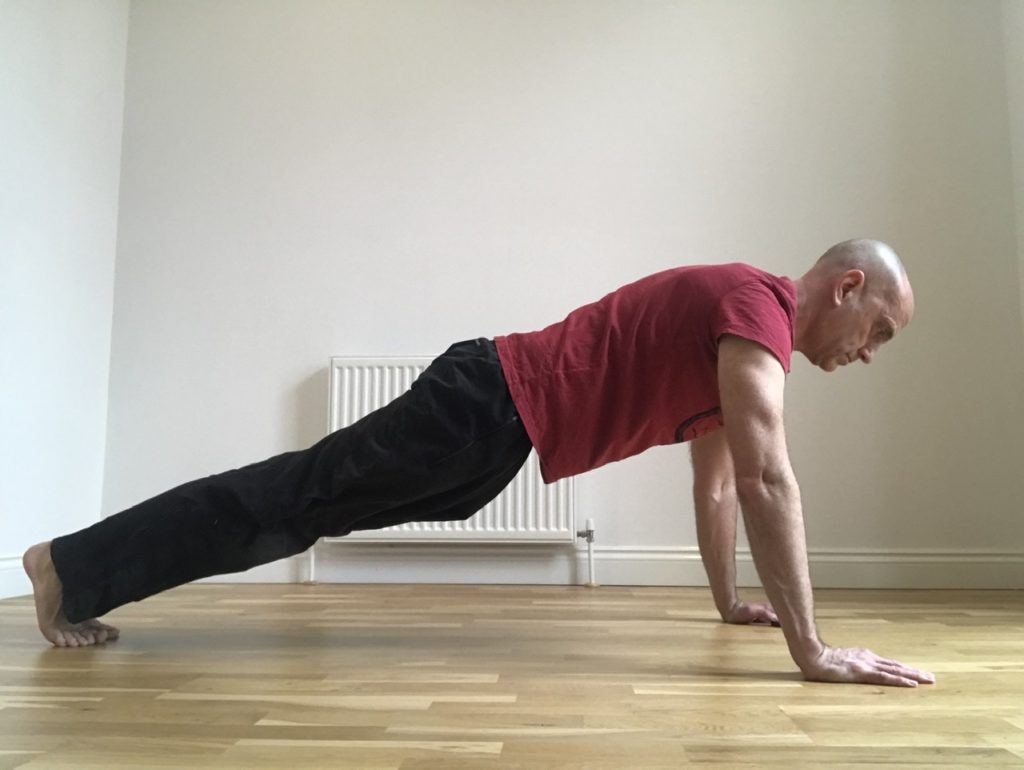
The push up is not just an exercise for your upper body. In order to perform it well, you’ll need to control your hips, pelvis, knees, and if you’re performing it from your feet, your ankles.
In the top position, with your elbows slightly bent, brace your abdominals as if you were about to receive a blow to the abdomen.
Think back to school if haven’t experienced this for a while.
Holding that contraction, slowly lower yourself towards the floor. This phase should take around 3 seconds and your body should move as a single unit rather than individual parts.
When you arrive at your predetermined depth, pause for a second before slowly pushing the ground away from you.
It should take you a further 3 seconds to move back up to the start position.
Again your body should rise from the floor as one. Ensure you don’t lead with your butt which is a common compensation.
Once you arrive at the top pause again before beginning another repetition.
How many did you manage? They’re much harder when you do them with control right? Excellent.
Push up variations
Once you’ve nailed the standard version, you can begin to think about variations that will bias certain muscles.
Typically people will add a decline to the push up, or begin to add circus style tricks, such as having one arm resting on a ball etc.
You don’t read these posts for typical advice however so we’re going to try something different.
Push up to increase pec major activation

If you struggle to feel your pectoral muscles during either a push up or a bench press, this tweek will change your life.
I recommend using this with the adapted push up version to begin with.
Slowly begin to lower yourself towards the floor. When you arrive in the bottom position gently push your hands inwards.
They won’t move of course but that inward intention will produce a greater contraction of pec major among others.
Holding the inward intention, slowly begin to push the ground away from you. Only release the tension when you get to the top of the movement and you’ve brought your upper arm as close to your chest as possible.
If you can do more than 10 of these you’re either not pushing in hard enough, or you should submit a urine sample at doping control.
Push up to increase posterior shoulder activation
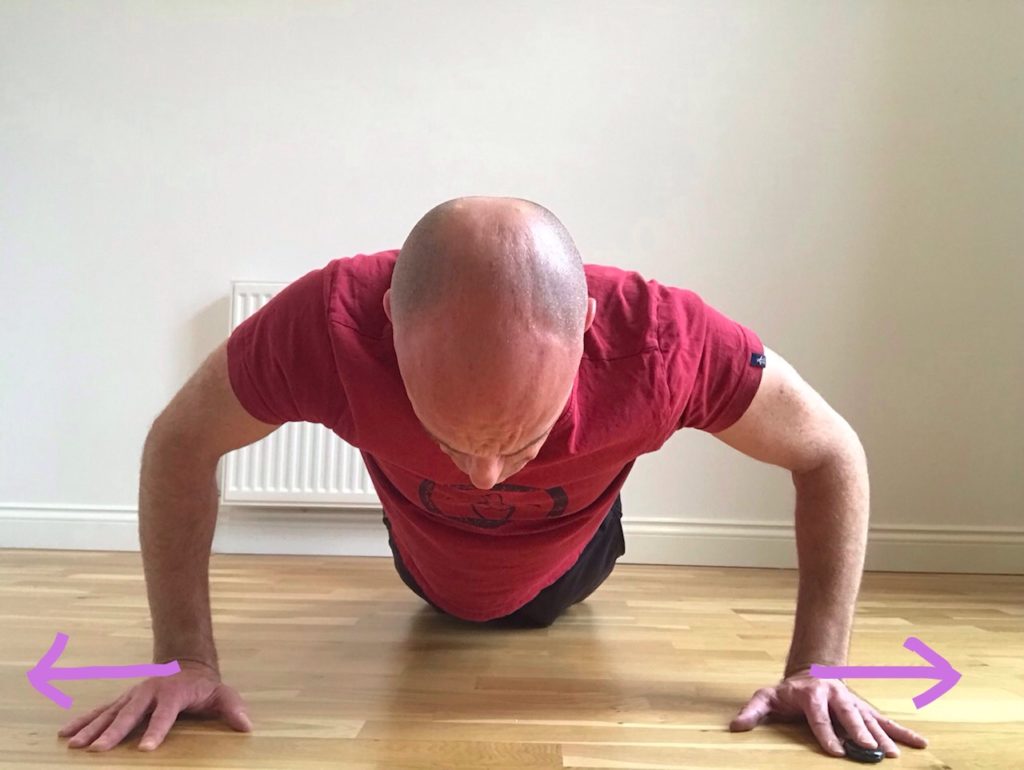
If you found you were limited in how deep you were able to go, this tweek may enable you to safely gain more range of motion
It will also provide an additional challenge to the muscles of your lateral deltoid and outer rotator cuff (infraspinatus, teres minor, supraspinatus).
Again I recommend experimenting with it from the adapted push up position to begin with.
Once in the start position apply a light outward force with your hands. Hold this contraction as you begin to lower your body towards the floor.
Monitor the position of your shoulder blades as you go down and make sure they begin to come together as you approach the bottom position.
Once there release the outward force, pause for a second and then slowly begin to push the floor away from you as normal.
Summary
The push up is a great exercise that few people perform well. Practice them 2-3 times a week along with your lower body and core work to see rapid improvements.
Thanks for that. I will try these additions to my routine. Not doing to badly with my fitness during isolation but this will help.
Regards Colin.